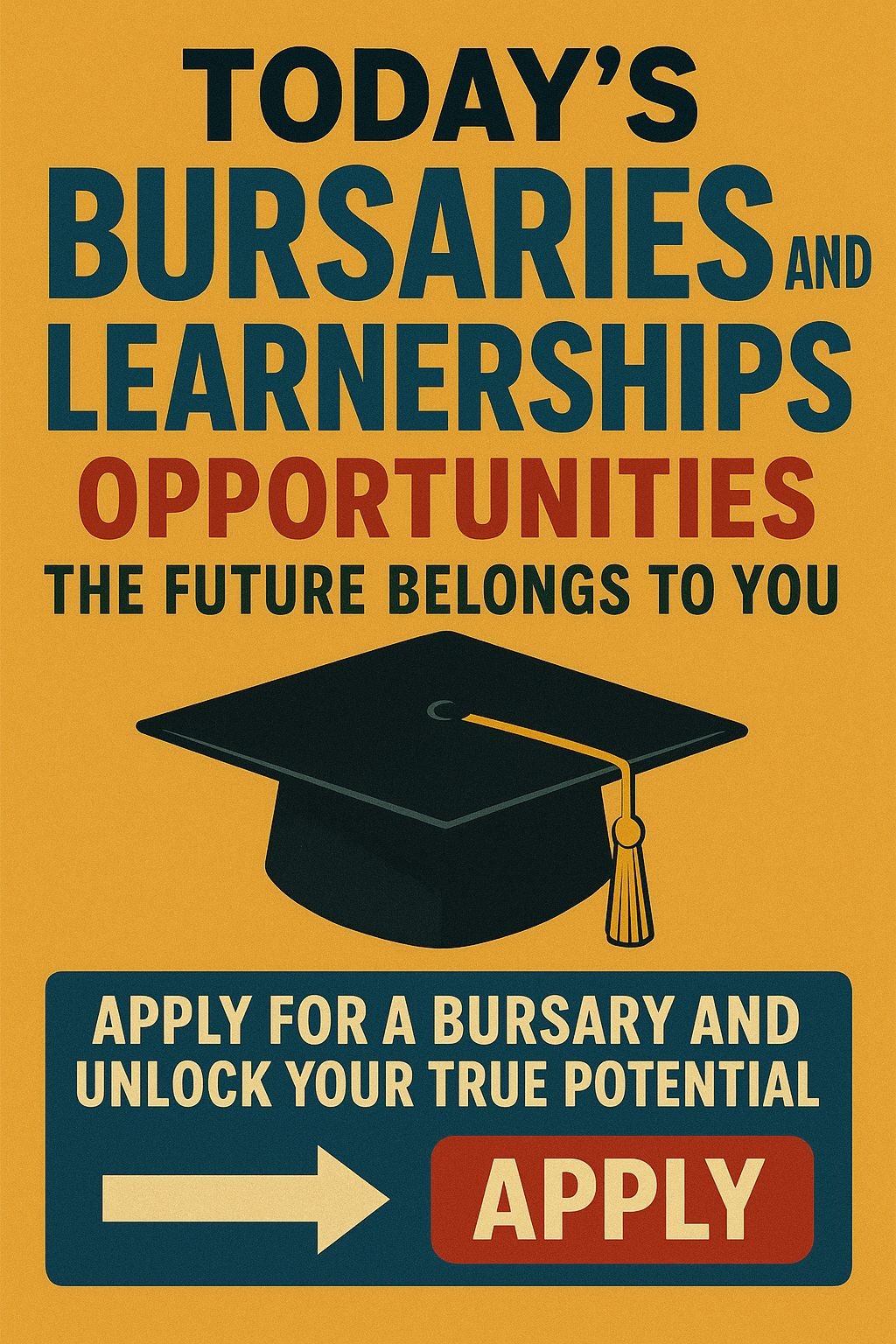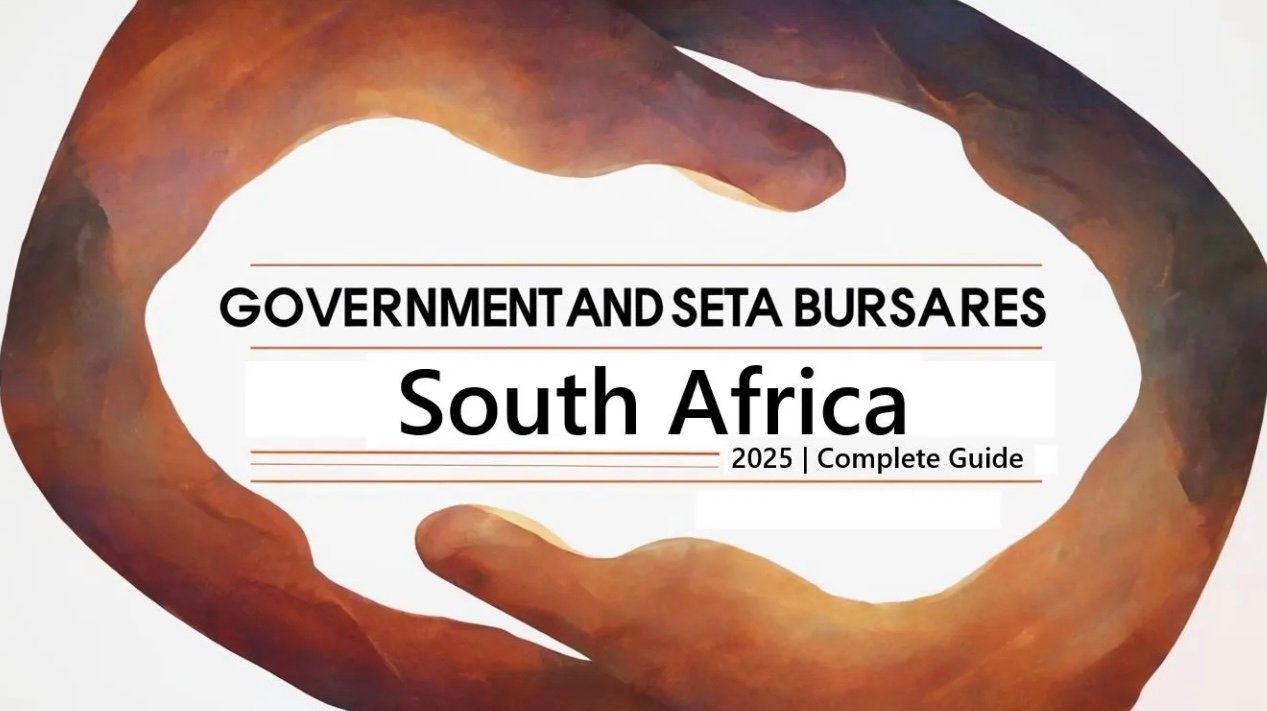What are bursaries and learnerships?
A bursary is financial support for study (full or partial) usually awarded on need, merit, or a combination of both. Learnerships are structured training programs combining workplace experience with theoretical learning and normally lead to a nationally recognised qualification. Both are routes to career entry, work experience, and reduced study costs.
Why look for opportunities today?
Bursary and learnership windows open and close frequently. New spots are posted every week by universities, SETAs, companies, and NGOs. Searching daily — or subscribing to alerts — keeps you ahead of deadlines and increases the number of opportunities you can apply for.
Where to find reliable listings
• Official university / college websites — bursary pages and financial aid sections.
• SETA (Sector Education and Training Authorities) — SETA learnerships and workplace training programs.
• Company careers pages — corporate bursaries and graduate learnerships.
• Government portals and youth employment sites — state-funded schemes and nationwide announcements.
• NGOs and foundations — some focus on specific fields or disadvantaged groups.
• Scholarship aggregators and trusted job boards — use reputable sites only and verify links directly with providers.
Typical eligibility criteria (what to check before applying)
• Nationality/residency: many bursaries require citizenship or permanent residency.
• Academic level: school leaver, undergraduate, or postgrad. Some learnerships are for unemployed school leavers.
• Field of study: bursaries often target specific faculties (engineering, accounting, IT, healthcare).
• Income means test: means-tested bursaries require proof of household income.
• Grades: minimum subject averages or final results (matric/NSC) are commonly required.
• Age or employment status: some learnerships are restricted to unemployed youth or graduates within a set age range.
Documents you almost always need
1. Certified copy of ID or passport.
2. Latest academic transcripts or school results.
3. Proof of residence.
4. Proof of household income (payslips, affidavit, SASSA letter).
5. CV and motivational letter.
6. Certified copies of qualifications (if applicable).
7. Reference letters or contactable referees (for work-based learnerships).
How to write a winning bursary/learnership application
1. Follow instructions exactly. If they ask for a 500-word motivation, deliver 500 words — not 200 or 1,000.
2. Tailor the motivation letter. Show why you’re a match: course relevance, career goals, community involvement. Use concrete examples.
3. Quantify achievements. “Top 10% of class” or “held finance portfolio for student council that managed a R20,000 budget.”
4. Be honest and clear. Don’t exaggerate. Authenticity is persuasive.
5. Proofread carefully. Spelling/grammar errors reduce credibility. Use simple language and short paragraphs.
6. Meet the deadline. Late applications are often discarded automatically.
Search & application strategy (practical plan)
• Daily scanning: Check three trusted sources each morning (university page, SETA listings, one aggregator).
• Alert setup: Use email alerts, RSS, or job boards to get notified the day a listing goes live.
• Application tracker: Maintain a spreadsheet with provider, closing date, documents, and status. This reduces missed deadlines.
• Apply wide, but apply well: Send 5–10 tailored applications per week rather than 30 rushed ones. Quality > Quantity.
• Network: Reach out to campus careers offices, lecturers, or career fairs — some opportunities aren’t widely advertised.
⸻
Interview and selection tips for learnerships
• Research the employer/SETA: Know their mission and the skills they value.
• Practice competency questions: E.g., teamwork, problem-solving, willingness to learn.
• Dress smart and arrive early (or log in early for virtual interviews).
• Bring copies of documents and be ready to discuss anything in your CV.
• Ask intelligent questions about mentorship, work placement, and assessment — this shows interest.
⸻
Common pitfalls and how to avoid them
• Missing required documents — keep a checklist for each application.
• Generic motivations — customize every time.
• Applying late — set reminders 3 days before deadlines.
• Overlooking small bursaries — smaller funds have less competition and good acceptance chances.
• Not following up — a polite follow-up email after deadlines can show initiative (only where appropriate).
Sample FAQ
Q: What’s the difference between a bursary and a learnership?
A: A bursary is financial support for studies; a learnership combines workplace experience with learning and usually leads to a qualification.
Q: Can unemployed school leavers apply?
A: Yes — many learnerships specifically target unemployed youth to provide workplace experience and qualifications.
Q: How early should I apply?
A: Apply as soon as the window opens. Preparing documents in advance lets you submit quickly when new opportunities announce.
Final checklist before you submit any application
• Documents scanned, named, and compressed correctly.
• Motivation tailored and proofread.
• Eligibility confirmed.
• References informed and contactable.
• Application form completed exactly as requested.
• Submission method verified (email vs. online portal vs. post).

